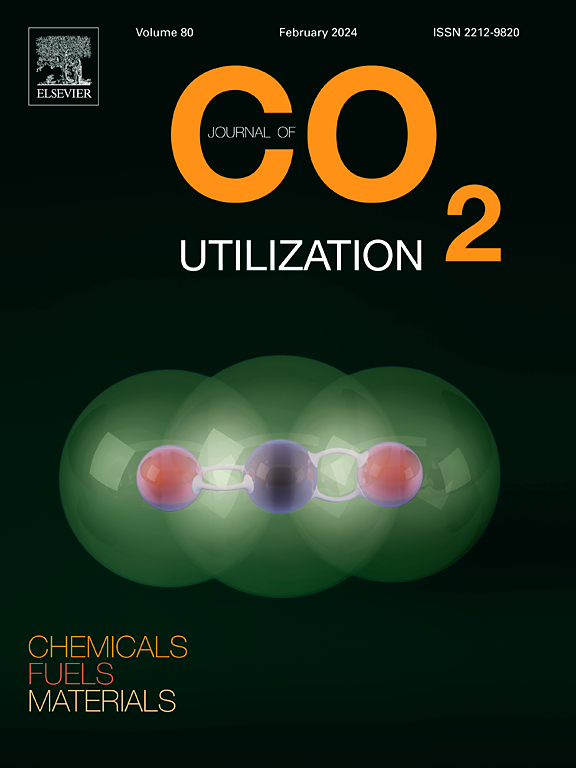黑盒和白盒机器学习工具,用于估计天然气混合物中低温二氧化碳捕获过程中的结霜条件
IF 8.4
2区 工程技术
Q1 CHEMISTRY, MULTIDISCIPLINARY
引用次数: 0
摘要
低温碳捕集技术(CCC)是一项很有前途的从天然气流中捕获二氧化碳的技术,它依赖于在低温下形成的二氧化碳霜。精确估计CO2结霜温度(FFT)对于优化CCC工艺和提高效率至关重要。本研究涉及用于预测天然气混合物中二氧化碳FFT的机器学习模型的开发。从文献中收集了包括430个实验样本的综合数据集。上述数据集包括二元和三元天然气混合物在各种压力和组分分数下的FFT数据。采用回归树(RT)、径向基函数神经网络(RBF-NN)和支持向量机(SVM)三种不同的黑盒算法对FFT进行建模。通过各种统计和图形方法严格探索每个模型的性能。虽然所有开发的模型都显示出很高的准确性,但RBF-NN模型是更好的预测工具,在验证阶段实现了0.82 %的平均绝对百分比误差(MAPE)和1.19 %的标准偏差(SD)。此外,利用基因表达编程(Gene Expression Programming, GEP)的白盒机器学习技术,提出了FFT的显式相关性,所有数据的MAPE为0.59 %。该模型还能够预测二氧化碳在二元和三元共混物中的FFT,并很好地捕捉了不同操作条件下FFT的复杂物理变化。为了更深入地了解控制CO2 FFT的最基本因素,进行了敏感性分析。本研究的结果反过来又有助于理解二氧化碳的FFT和天然气行业CCC过程的优化设计。本文章由计算机程序翻译,如有差异,请以英文原文为准。
Black-box and white-box machine learning tools to estimate the frost formation condition during cryogenic CO2 capture from natural gas blends
Cryogenic carbon capture (CCC), a promising technology for the sequestration of CO2 from natural gas streams, relies on the CO2 frost formation at cryogenic temperatures. Precise estimation of the CO2 frost formation temperature (FFT) is vital for optimizing CCC processes and maximizing efficiency. This study deals with the development of machine learning models for predicting the FFT of CO2 in natural gas blends. A comprehensive dataset, including 430 experimental samples, was assembled from the literature. The foregoing dataset included the FFT data for binary and ternary natural gas blends across a wide range of pressures and component fractions. Three distinct black-box algorithms, including Regression Tree (RT), Radial Basis Function Neural Network (RBF-NN) and Support Vector Machine (SVM) were employed to model FFT. The performance of each model was rigorously explored through diverse statistical and graphical methods. While all developed models demonstrated high accuracy, the RBF-NN model was the superior predictive tool, achieving a mean absolute percentage error (MAPE) of 0.82 % and a standard deviation (SD) of 1.19 % during the validation phase. Also, an explicit correlation for FFT was proposed using the white-box machine learning technique of Gene Expression Programming (GEP), which achieved the MAPE of 0.59 % for all data. The models were also capable of predicting the FFT of CO2 in both binary and ternary blends, and favorably captured the complicated physical variations of FFT under diverse operating conditions. To gain deeper insights into the most fundamental factors in controlling the FFT of CO2, a sensitivity analysis was conducted. The findings of the current study, in turn, contribute to the understanding of FFT of CO2 and the optimal design of the CCC processes in natural gas industries.
求助全文
通过发布文献求助,成功后即可免费获取论文全文。
去求助
来源期刊

Journal of CO2 Utilization
CHEMISTRY, MULTIDISCIPLINARY-ENGINEERING, CHEMICAL
CiteScore
13.90
自引率
10.40%
发文量
406
审稿时长
2.8 months
期刊介绍:
The Journal of CO2 Utilization offers a single, multi-disciplinary, scholarly platform for the exchange of novel research in the field of CO2 re-use for scientists and engineers in chemicals, fuels and materials.
The emphasis is on the dissemination of leading-edge research from basic science to the development of new processes, technologies and applications.
The Journal of CO2 Utilization publishes original peer-reviewed research papers, reviews, and short communications, including experimental and theoretical work, and analytical models and simulations.
 求助内容:
求助内容: 应助结果提醒方式:
应助结果提醒方式:


